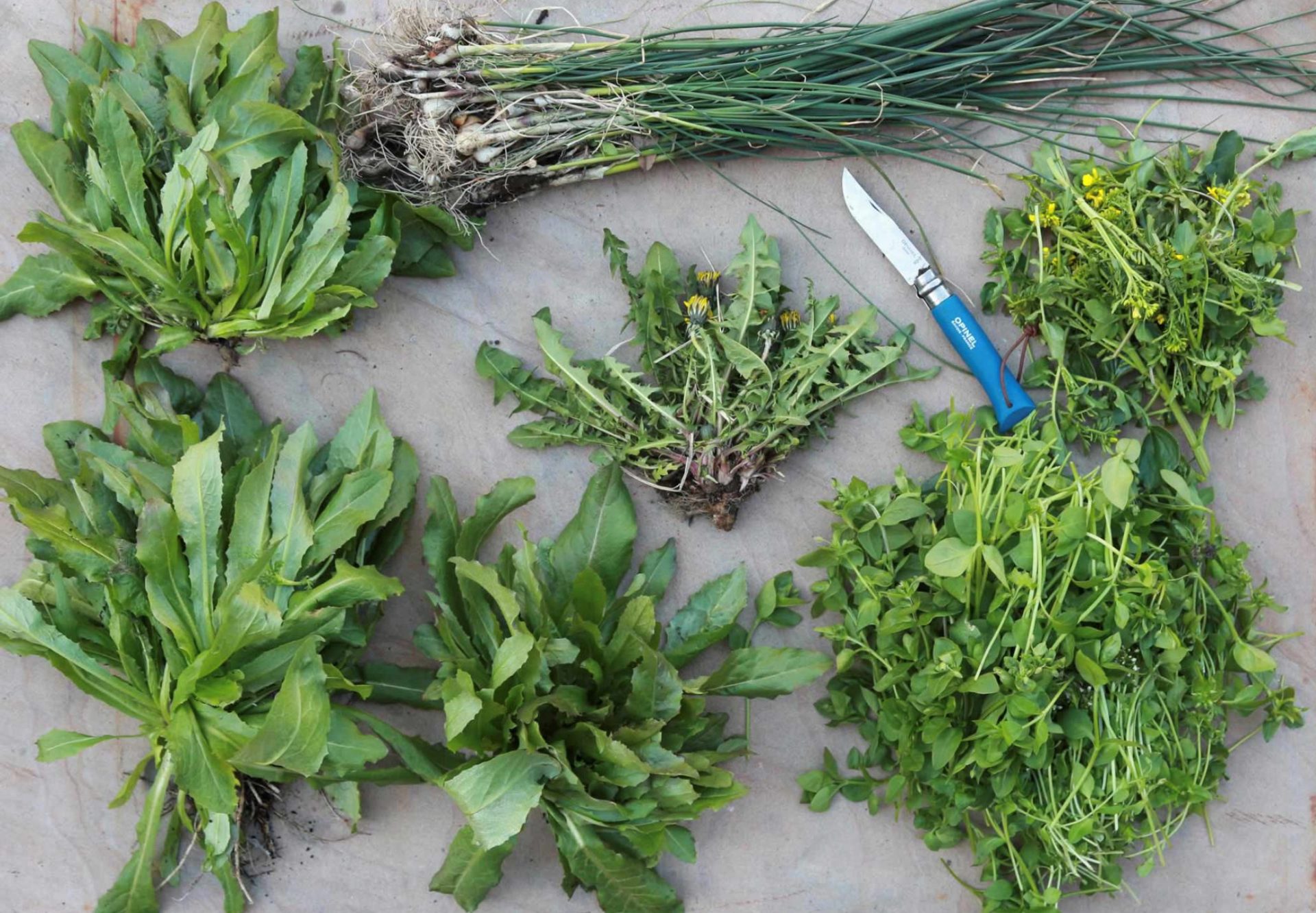UW Farm Weekly Dirt: The Cultural Utilization of Weed Harvesting
Within various cultures the utilization of harvesting weeds is a practice to sustain food security. Chickweed, dandelion, shepherds’ purse, crabgrass, common purslane, shot weed, and lamb’s quarter are all known weeds harvested for consumption throughout a vast number of cultures.
Weeds that are harvested for consumption are often known by differing names and preparation styles across cultures. They may be consumed in a variety of ways, including cooked, baked, or raw in salads, sautés, sauces, stir-fries, soups, or in a pickled form.
It’s quite interesting how nutritious these elements can be. For instance chickweed is considered a nutritional all-star containing calcium, magnesium, B vitamins, selenium, zinc, potassium, copper, gamma-linoleic acid and more. Dandelions are known for their benefits of improving digestion and containing high levels of potassium, vitamin A, iron, vitamin C, calcium, and protein. Likewise, plantains are a great source of calcium, potassium, vitamin C, K, and A. However, my favorite of them all -purslane- is a well known weed within the Latinx community, and is widely harvested and consumed for its health benefits.
 A serving of purslane (100 g) can provide one with 350 mg of a-linolenic acids — a greater amount of omega-3 fatty acids than any other leafy green. It is the highest source of vitamin A among leafy greens and contains vitamin C, vitamin B, riboflavin, niacin, pyridoxine carotenoids, iron, magnesium, calcium, potassium, manganese, and a wealth of antioxidants.
A serving of purslane (100 g) can provide one with 350 mg of a-linolenic acids — a greater amount of omega-3 fatty acids than any other leafy green. It is the highest source of vitamin A among leafy greens and contains vitamin C, vitamin B, riboflavin, niacin, pyridoxine carotenoids, iron, magnesium, calcium, potassium, manganese, and a wealth of antioxidants.
Purslane grows abundantly in and around dry soil. Its peak harvest seasons are mid-spring and summer. Since it grew prolifically around my childhood home, purslane was commonly served in our household and it soon became one of my favorite weeds.
A core memory I have is going outside and harvesting purslane to provide it for my mother and father’s dish. This was one of my favorite meals that has become very nostalgic. It is washed, prepared (chopped), boiled, and then seasoned with salt, lemon, and salsa. Mid-summer was the greatest part of harvest season for Purslane as our yard flourished with this weed. Soon enough we would find our neighbors coming to my family’s household to harvest.
All in all, rather than attempting to eliminate and remove this weed I was able to see my community gather, harvest, and appreciate the nutrition and natural beauty of our environment. This opportunity to acknowledge and understand the true purpose and value of all plant forms is a cultural teaching that has sprouted a new definition of food security and food sovereignty that can be utilized by all. Creating a form of security in knowing that even when food accessibility falls low there is nutrition all around us, and one simply must take the time to understand the value of what surrounds us.
Above photo: https://www.saveur.com/invasive-edible-weeds/